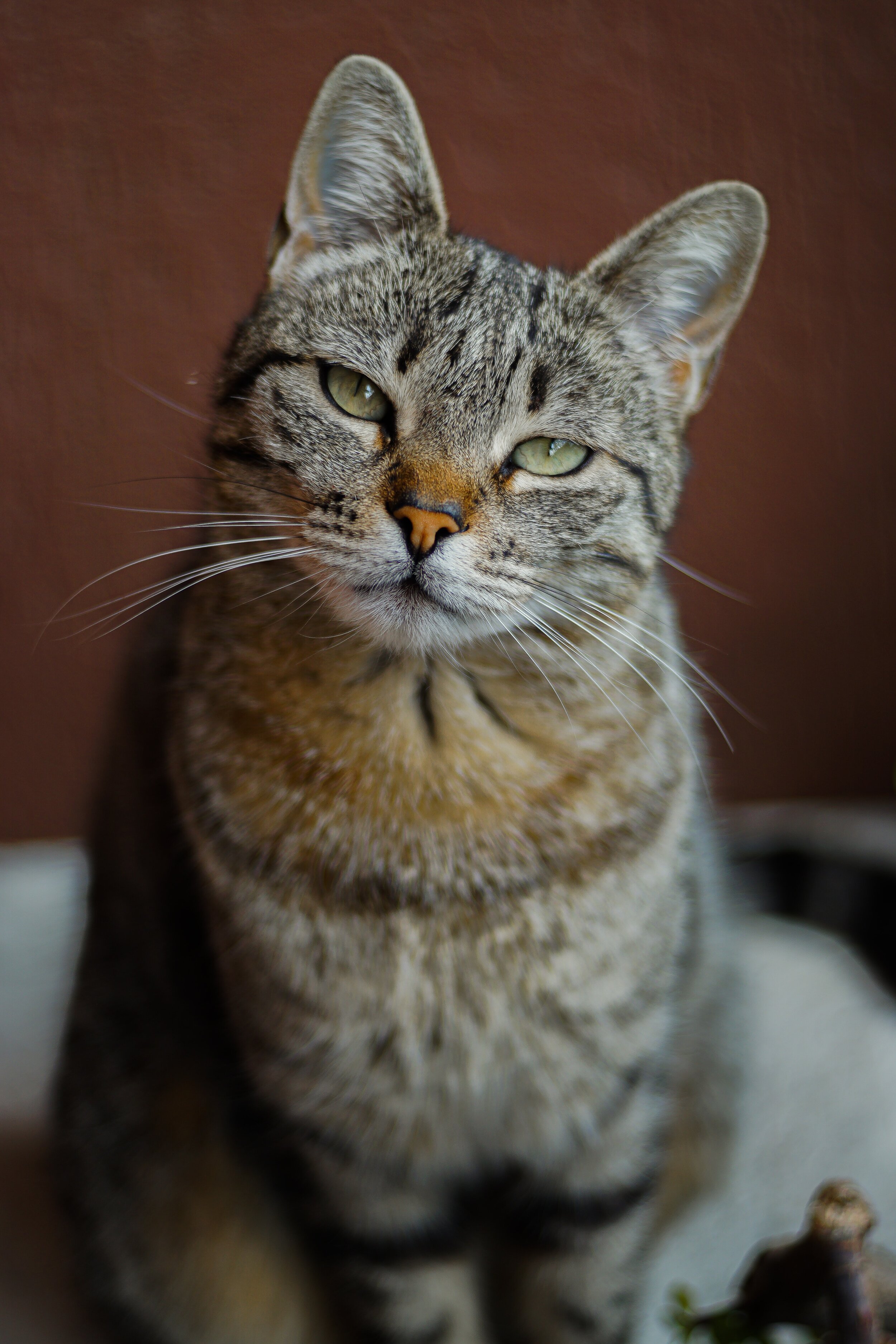Curious how your cat feels? Watch her eyes.
Cats: From service providers to sidekicks
We go way back with cats. Humans originally started tolerating cats living near their settlements because they kept rodents and other pests away. Over time their role changed. Now cats are the second most popular companion animal, sought out for friendship and company. People love their cats and feel that their cats (mostly) love them.
Communicating with our animal companions
When humans share generations of companionship with other animals, they develop effective ways of communicating with one another. Often, animals communicate with us in ways that tap directly into our emotions. Think, for example, how you feel when a dog looks up at you, raises those inner eyebrows, and gives you his “puppy dog look.” Researchers have shown that this eyebrow musculature is not present in wolves but evolved in domesticated dogs, and it likely serves to trigger a nurturing response in us. (If you have a hard time not slipping some table scraps to a dog giving you the puppy dog face, you’re only acting as evolution intended.)
Dog with raised inner eyebrows, giving the “puppy dog” face. Photo by Jordan Davis on Unsplash
Cats and the “slow blink”
Over the last few years, researchers have been interested in the feline “slow blink.” The slow blink is characterized by a series of half eye closures followed by either a full closure or a prolonged eye narrowing. If that doesn’t instantly conjure up a visual for you, you can see what I’m referring to in this video.
Cat that may be in the midst of a slow blink. Photo by Marco Biondi on Unsplash.
It seems the slow blink may be a way of communicating positive feelings from people to cats, and cats to people. A study published last year found that cats were more likely to approach strangers who slow blinked at them, compared to those who don’t.
Just recently, the research team studied cats again to learn more about this communication and the effects it has on people. Researchers approached cats in an adoption center in the UK and either slow blinked at them or did not. Video recordings revealed that cats were more likely to slow blink at people who slow blinked at them (exchanging smiles with their eyes, so to speak). The most fascinating bit of this study, however, is that cats who responded in turn with slow blinks more often were adopted more quickly. People were more willing to care for cats who communicated with slow blinks, demonstrating that slow blinking is an effective communication strategy for cats!
Helping animals thrive in our care
Cats aren’t just trying to manipulate us with these slow blinks. Eye narrowing likely communicates a positive emotional state in a lot of species including cats, dogs, horses, and ourselves. After all, the evidence of a genuine smile is in our eyes, not our mouths. If you see your cat slow blinking, you can bet they probably are feeling pretty good about what’s going on at the time.
The more we understand how companion animals communicate with us, the more responsive we can be to their emotions and the better we can set them up to feel good living alongside us.
If you want to learn more about how cats read our emotions, check out this post. And, if you’d like to share stories, videos or pictures of your pets or see what other readers’ pets are up to, check out the Happy Pets Facebook Group here!
Learn more about the researchers
Tasmin Humphrey, School of Psychology, University of Sussex, United Kingdom
Faye Stringer, School of Psychology, University of Sussex, United Kingdom
Leanne Proops, Department of Psychology, University of Portsmouth, Portsmouth PO1 2DY, UK
Karen McComb, School of Psychology, University of Sussex, United Kingdom
Article
Humphrey, T., Stringer, F., Proops, L., & McComb, K. (2020). Slow Blink Eye Closure in Shelter Cats is Related to Quicker Adoption. Animals, 10(12), 2256. Link to article.

